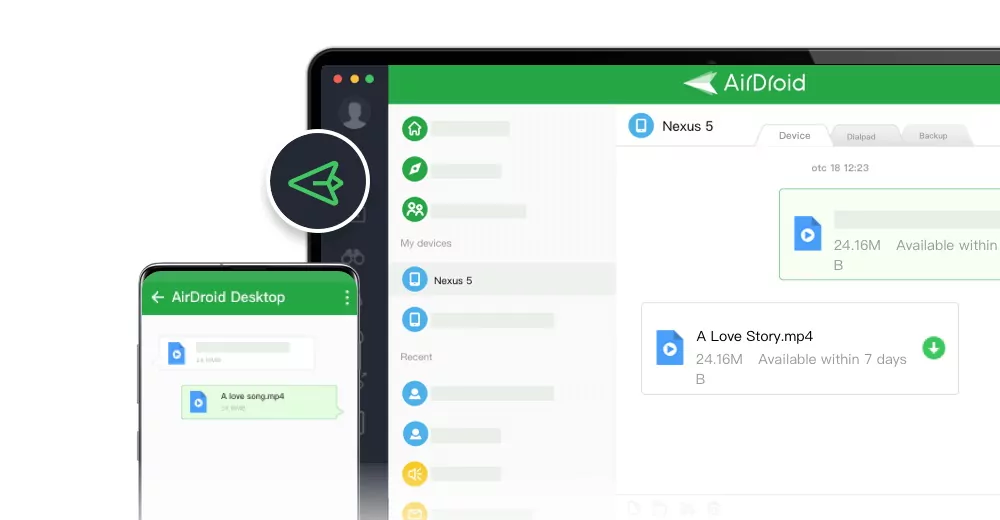How to Tell If Your House Is Bugged? [5 Signs]
Do you ever suspect that someone was watching you or, worse, spying on you? Even though it sounds like a scene from a Thriller movie, spy cameras, and listening devices are a reality. Therefore, being aware of the signs of a hidden camera and listening device is crucial. But how do you know if your home has been bugged? Read on. We will explore the telltale signs of a compromised space and the easy steps you can take to find hidden devices.

Can Someone Bug Your House Without You Knowing?
Yes, you should know someone can bug your house without a trace. The latest spy tools, including cameras and listening devices, are often small and difficult to catch. In some cases, these devices come with motion detectors and microphones that can detect even the slightest sound. Thus, it is important to be mindful of the signs of a home bug infestation and take the necessary steps to protect yourself.
5 Signs to Tell If Your House Is Bugged
It is possible to detect a bugged house if you know what to look for. Here are 5 signs to watch out for that might indicate your house is bugged:
1. Unexplained Noises and Sounds
Pay close attention to your electronic devices, especially phones and landlines. Never underestimate strange static, clicking sounds around you, or even faint humming noises when electronics are off, as it could be signs of a listening device.
2. Displaced Physical Objects
Keep an eye on your belongings. Bugs are often hidden in everyday items or within the home's infrastructure. Always trust your instincts if something feels off. For instance, if you notice furniture, decorations, or other objects that are slightly moved or appear tampered with, it's worth investigating further. In addition, check the tiny pry marks around outlets or light switches, as these might be access points.
3. Unanticipated Electronic Interference
Any unusual behavior with your electronics could be a potential red flag. This may include unexpected static on the radio or TV, flickering lights, or signal loss without apparent cause. Electronic bugs can interfere with the regular operation of these devices. If your gadgets behave erratically and there's no evident technical issue, consider the possibility of surveillance equipment being the culprit.
4. Abnormal Phone Conduct
Your phone can also show signs of being tapped or bugged. Look for unusual behaviors such as sudden battery drainage, overheating, or glitches. It could be a sign of interception if you hear unusual clicks or voices during your calls. Additionally, if your phone lights up or makes noises when not in use, it might indicate that someone is remotely accessing it.
5. Unusual Behavior of Pets
Pets are sensitive to their environment and often react to hidden devices that emit frequencies or noises undetectable to the human ear. If your pet starts behaving strangely, such as barking at seemingly empty spaces, acting anxious in certain areas, or avoiding specific rooms altogether, it could be a sign that something is amiss.
What Are Listening Bugs and Wiretaps?
It's common to use listening bugs as well as wiretaps for surveillance purposes. Here's a closer look at what they are and how they operate.
What Are Listening Bugs?
A listening bug is a small and discrete device equipped with a microphone and a transmitter that records audio from its surroundings. These devices can be placed in various locations within a home, office, or vehicle to monitor conversations and other sounds secretly. Listening devices aren't always legal, as they are often used for corporate espionage, blackmail, or plain spying.
What Are Wiretaps?
Wiretaps are a traditional form of electronic eavesdropping specifically designed to intercept telephone communications. They are typically used to monitor phone calls and can be implemented in various ways, such as physically connecting a device to the telephone line. Additionally, wiretaps can intercept text messages, emails, and other electronic communications. In some cases, law enforcement may use wiretaps to investigate a case with a warrant.
Where Are Listening Devices Usually Placed?
In order to protect yourself against potential surveillance, you should be aware of the typical locations of Listening devices. Here are some common places to look for listening devices.
Home and Office Items
It's common to hide listening devices in various household and office items that blend seamlessly into the surroundings. These may include lamps, light fixtures, clocks, radios, picture frames, and mirrors. These pesky devices are placed behind mirrors, picture frames, or within the frame itself, as well as in rooms where conversations frequently occur.
Smoke Detectors and Fire Alarms
Other common hiding spots for spy or listening devices include smoke detectors and fire alarms since no one checks them.
Electrical Outlets
The electrical system in a home or office provides numerous opportunities for concealing listening devices. This method requires technical expertise, but it's preferred because it can hide bugs behind or within electrical outlets and remain operational for extended periods. Moreover, Power Strips and Extension Cords can house listening devices within their casings, making them an ideal choice for surveillance.
Furniture
Furniture and fixtures provide ample space to conceal listening devices without arousing suspicion. For instance, it's easy to place a bug underneath tables, chairs, or desks. Plus, listening devices can be attached to the back of picture frames, concealed by the frame and backing.
Other possible hiding places for such devices include air vents, ventilation systems, and office supplies.
How to Find a Listening Bug in Your House?
Listening bugs come in all sizes and appearances. Most of them are very small and disguised as everyday objects like pens, buttons, or even screws. Stay vigilant. Even a pen with a hidden microphone or a stapler concealing a transmitter could record your conversations. If you suspect someone is invading your privacy, there are steps you can take to remain on the safe side. Here's how to find a listening bug in your house.
Physical Inspection
Conduct a thorough physical inspection. Look for anything out of place, whether your belongings or your environment. Check everyday items and places where it is feasible to hide a bug, such as smoke detectors, clocks, lamps, electrical outlets, and behind pictures or mirrors. In a quiet environment, listen for faint buzzing, clicking, or static noises, which could indicate the presence of an active listening device.
Electronic Sweeping
Electronic sweeping involves using dedicated equipment to detect hidden spy devices. Use a Bug Detector to identify radio frequency (RF) signals emitted by listening devices. Additionally, Scan for Wireless Signals to detect wireless signals transmitting audio. Turn off all wireless devices in your home, then scan for any remaining signals that could indicate a bug.
Is Bugging a House Illegal?
Yes, invading a home or installing listening devices without consent is illegal. Recording conversations without permission is unethical and prohibited. Moreover, installing a hidden camera or spy device in a private space is also unlawful. Are you concerned about how police or law enforcement handle legal matters? It may be possible for law enforcement agencies to monitor or bug a house, especially when national security is at stake.
Wrapping Up
The possibility of a hidden listening device is alarming, but understanding the signs and common hiding spots empowers you to stay out of harm's way. With a watchful eye and a professional sweep if necessary, you can ensure your home remains safe for private conversations. If you suspect someone is bugging your house, you should contact the police right away. You can also contact a private investigator to help investigate the situation and provide evidence if necessary.
Bonus Tool to Ensure Your Child's Safety
If you are parents who want to ensure your child's safety, you can use AirDroid Parental Control. It can track the real-time location of your kids. Additionally, you can set geofencing boundaries to receive notifications if your child enters or leaves designated safe areas, giving you peace of mind and helping you stay connected with your child's whereabouts and well-being at all times.
- Monitor their time usage and screen time
- Set clear screen rules and guidelines
- Block potentially harmful websites and apps
- Sync notifications from your child's phone











Leave a Reply.